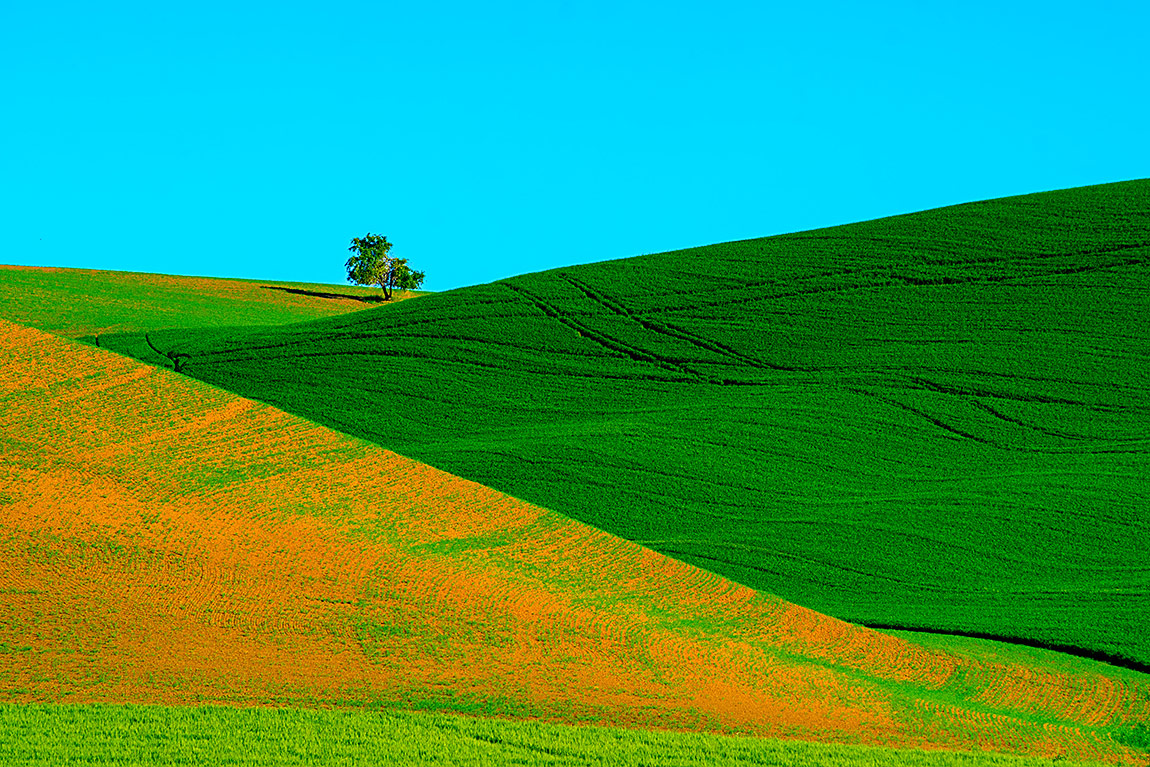A couple of years ago, I finally had a chance to visit the Palouse area in June for its spring green-covered hills. The Palouse is a magical section of Washington State known for its undulating loess hills covered with their spring growth of wheat and other legumes.
The Palouse Losses is essentially a windblown sediment that formed the rolling hills, much like sand dunes along a beach, and it explains why the dirt roads are so dusty and almost impassable when wet. One photographer' called Palouse the Tuscany of the US.
Having visited Tuscany, I think it is a bit much, yet the Palouse does have its own amazing beauty. However, I am sorry, there is no Italian culinary experience or quaint atmosphere of a Montepulciano or Pienza. What makes the Palouse so special are the early mornings and late evenings that provide wonderful highlights and shadows enriched by the various shades of green of fresh growth or, later in the year, the various shades of gold from the recently harvested crops.
In getting ready for any of my photo ventures, I endeavor to gather as much place information as I can. Increasingly, one can find a lot of resources online. In this case, I was also able to get a good brochure of the Palouse from the Palouse Chamber of Commerce in Pulman, WA. However, nothing can top wondering the hills and back roads to get the feel of the area and scope out the shot for early morning and late evening.
In this case, I was working my way back to Pulman, not too far from Union Center on Benedict Road and spotted this scene. I liked the smallish scrub of the tree placed between two hills of varying colors and patterns. The tree must have been hit by lightning as the centre is rather tattered and looks split.


